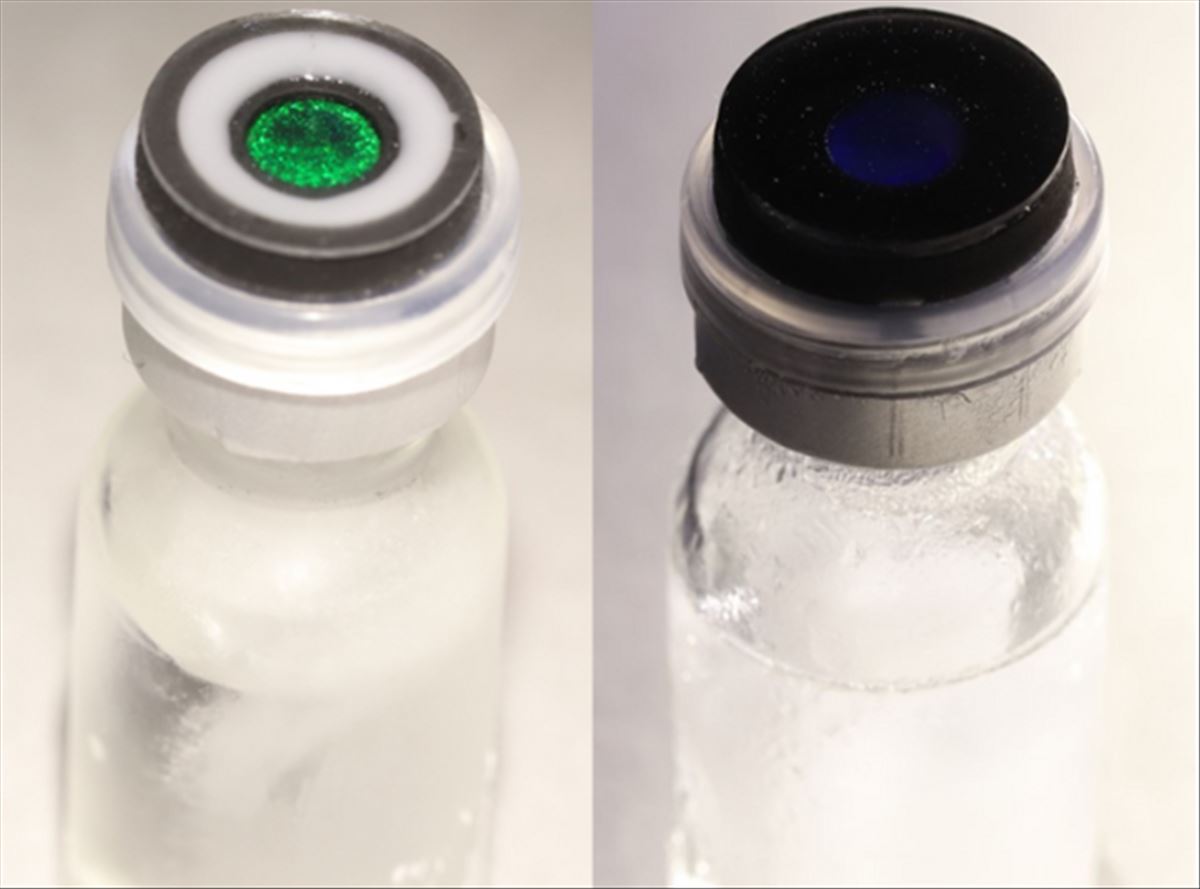A team of scientists has developed a new material that changes color when temperature-sensitive drugs or products exceed safety limits. The breakthrough could have a significant impact on the pharmaceutical industry and the medical supply chain, providing a more efficient and sustainable way to monitor and guarantee the quality of products during transport and storage.
Published in ACS Nano, the research presents a new approach based on structural colors that are more adaptable and sensitive than traditional electronic sensors or dyes. The team of researchers decided to employ structural colors for their temperature indicator system, which are based on glycerol-coated silicon dioxide nanoparticles that can form microcrystals in the presence of water. When these nanoparticles clump together, they reflect bright colors like green or red.
The next step was to develop a liquid solution with variable melting points, using a mixture of polyethylene glycol, ethylene glycol, and water. By combining the nanoparticles with this solution, they created a material capable of irreversibly changing color when the temperature exceeds a certain threshold. Response time and color change temperature can be customized to suit different products and requirements.
As a proof of concept, the researchers integrated this color-changing material into vial caps and QR codes. When drugs are exposed to temperatures above the recommended limits, the material changes color from green to colorless, indicating that a temperature rise has occurred. This feature can be especially valuable for products like COVID-19 vaccines, which need to be kept at low temperatures to ensure their effectiveness.
This new approach based on structural colors offers numerous advantages over traditional options. Unlike conventional dyes, which can fade at freezing temperatures, this material maintains its ability to change color even under extreme conditions. In addition, it avoids the generation of electronic waste associated with electronic sensors, which makes it a more sustainable solution.
The ability to monitor and ensure the quality of heat-sensitive medicines and products in the supply chain is critical. This new color change material offers a convenient and effective way to detect temperature deviations, allowing for a quick response to prevent product loss or ineffective drug delivery. Furthermore, its versatility and adaptability make it a promising solution for a wide range of applications in the pharmaceutical industry and beyond.
Source



